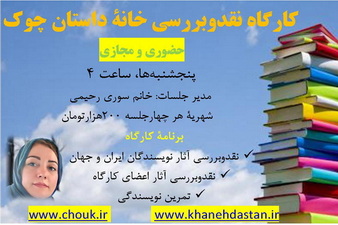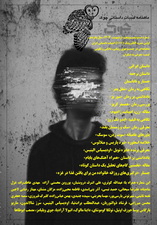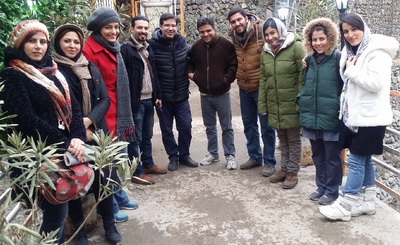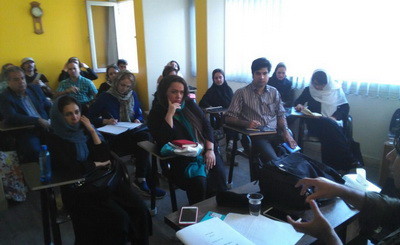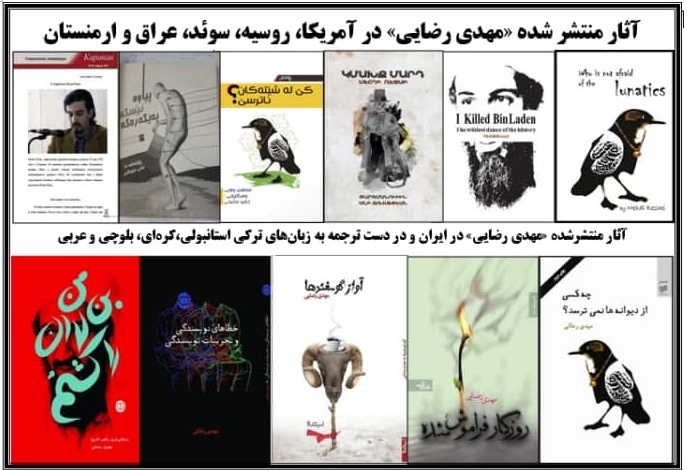 It was the summer that we, of our own guts, decided to become anesthesiologists. It was the summer that my twin sister and I went about capturing the smallest animals we could find and placing them in dirty green-glass jars which smelled of brine.
It was the summer that we, of our own guts, decided to become anesthesiologists. It was the summer that my twin sister and I went about capturing the smallest animals we could find and placing them in dirty green-glass jars which smelled of brine.
Somehow, we discovered our father’s medical tools hidden inside a suitcase in the attic of our garage. The case was coated in grey dust and had the fingerprints of ghosts along the hinge. When we unclasped the rusty latch, a sepia picture of our parents as children in love slipped out. There was my father, in a bow tie, and my mother in a starchy gown with a string of pearls that smiled along her neck like a second mouth. We put the photograph back in the case, held our hands over our lips, and went about pawing through the strange silver instruments, looking for something to take the bleary boredom out of the end of a summer that was meant to be intensely recuperative.
The house was to be completely silent at all times. Our mother direly needed rest and quiet. We were told this time and time again even though my sister and I had given up talking completely, relying instead, on elaborate hand signs. We were making our own language at the time; one without any words, a kind of code where you would spread your fingers to resemble a sparrow to indicate that you wanted to go outside; but then by placing the same gesture over your eyes, you might signal that you were sad or angry or very tired. The language was so imperfect that it was deeply beautiful, because each sign meant three things at least and the other’s response was so inaccurate that it gave both of us the sense that we were psychic, because it was impossible that the signs we shared could not be right. We were only concerned with discussing one thing, so every expression our hands made told the same story over and over again, each motion, each sign. On the first day of summer, my mother’s birthday, our father had hung himself in the cellar and the sound of that act was something none of us could get out of our minds.
Once, we found the medical bag however, the summer began to turn on its end for the better. Beyond the silvery scalpels and slender forceps and blunt tweezers, which our father had sometimes used to remove splinters from our fingers, we found something extraordinary: a hypodermic needle and a small vial of Belladonna, marked DANGER! PELIGROSO! SEDATIVE.
It was not long before we began to make use of the stuff then.
We decided to try it out on an insect, because it seemed pretty clear that insects were intended for this sort of experiment; if something went wrong and the patient were to die, it seemed very unlikely the creature would suffer much or be missed by family or friends having inexcusably expired. Also, insects, for the most part, were indubitably hard and not tender-soft. Scientifically, it seemed the luxury of pain, and the accompanying recipient of pain, the soul, which we had been forced to recognize in Sunday school, resided within things that were soft. So my sister argued, at least; Isabella being born three full minutes before me. It seemed an expeditious and more complete knowledge would always be her destiny.
We sedated things in this order with a variety of success: crickets, horseflies, bumblebees, wood bees, caterpillars, tiger moths, grasshoppers, stick bugs, box elder bugs, stag beetles, and finally, a single pill bug, which rolled up inside itself to rest and somehow never awoke again. In this first series of experiments, we decided a lower dosage was also preferable to a higher dosage; it seemed a high dose always ended with the patient becoming quite stiff, then spilling out its milky innards in a frenetic paroxysm of death. Most of the patients who were revived, however, simply hopped or flew or buzzed away, without any noticeable kind of side effect, except the only time I was allowed to inoculate the victim, a big golden wood bee, in which I accidentally punctured the wing in handling the hypodermic carelessly, ending with the poor fellow flying in circles around our head before wearing himself to a paralytic state and eventual submission to an exhaustive death. For the most part, I was the recorder of the experiments: Hypothesis, Tools Used, Process, Results, Conclusion. After the first few experiments, I simply made an addendum to the following trials in which I wrote, “See Experiment One,” if the patient expired, or “See Experiment Five” if the patient managed to survive.
What really happened next was I began to get bored watching my older sister have all the fun. As always, Isabella was bossy, and after the mauling of the wood bee, I was not allowed access to any of the instruments. So, on my own, I decided to change the nature of the experiments. Instead of simply sedating the animals, I thought it would be much better to sedate them for a purpose, and the purpose I selected was, without a doubt, fantastic.
We would dress the animals up while they were asleep.
It was simple enough, really. My twin sister had a number of small doll outfits, cut perfectly to size for small four-legged creatures, like frogs, toads, snakes, salamanders, and field mice. We spent half the day trapping our quarry, with left-overs from the lunch the boil-necked nurse prepared for our mother, who was making no marked improvement, then the second half was devoted to the sedation and fitting of clothing.
For the most part, the animals did not seem to mind. My twin had become so adept that rarely was there a fatality, and in the small number of cases where the patient died, a fawn-colored bunny for example, it seemed all the more fitting that the deceased be dressed in small white bloomers and a velvety blue jumper. As my sister’s skill with the hypodermic improved, I too, found myself able to match almost any animal to a corresponding outfit with a certain degree of alacrity. I could tie a row of miniature pink bows along any woodland creature’s tail, coordinate miniature hoods and skirts, without fail, and even find funereal silver slippers of a silver hue for a blind shrew, which my sister over-sedated, thinking it was a mole with a much more durable constitution.
The animals, when they awoke, would fuss about in their garments at first, but slowly, slowly, my twin and I could see the patients enjoying themselves, prancing about, admiring their new couture, before disappearing back into the high prairie grass and then the woods. I often imagined a small child, or even better, a hunter of some kind, stumbling upon our beauties as they savaged about, spotting a pink-lace nightgown on a dove white rabbit, or a turtle with ribbons along its appendages and a shell painted corn-flower blue. I guess, to someone, the experiment might, at this turn, seem unnecessary and cruel. I would then bid that someone to take hold of a magnifying glass and study the dusky apparatus of his own youth. Someone might argue what we did lacked any meaning or motive, that we were simply terrorizing these innocent animals, when in fact, it was after several successful sedations, and their subsequent costumings, that we stumbled upon our true purpose.
(I would like to take credit for the notion, but truly, it was my twin sister who got the idea for the parade.)
Having properly acquainted herself with the medical way, Isabella, after long hours of watching our mother alternating between crying and sipping lentil broth at her bedroom window, a motion which seemed quite heart-rending and replete with mucous, either way, it was my sister who came to a diagnosis. Our mother had suffered a horrible shock, almost like a victim of electrocution. She found our father hanged in the cellar and not only that, but on her own birthday. It seemed scientific to believe a shock of a most equal and opposite magnitude would have a definite curative effect. Scientifically, we decided a parade of costumed animals would do the trick.
We spent the next three days trapping animals of all kinds. We were running out of sedative very quickly so if the therapy were to take place, it would have to be soon. The animals we selected were: a garter snake, which I decorated with several bells and ribbons, three baby rabbits, which Isabella dressed in matching gold skirts, several frogs, which looked dapper in fitted black pants and accompanying jackets, and a salamander, who wore gloves. As it was, there was just enough sedative for all the animals. Isabella, being very cautious not to provoke an overdose, emptied the contents of the vial as gently as a trained nurse. Then I went to work. Soon enough, all the animals had been sedated, then dressed, and we could hear our mother’s tea whistling from inside the kitchen, which meant she would be waking soon.
We pushed the small red wagon out in front of our mother’s bedroom window and gingerly arranged each ornamented animal in a small ellipse on the soft side lawn. When all the slumbering participants were in place, my twin and I began to shout loudly.
My mother came to the window, panicked, holding both hands over her chest. She stared at us for signs of injury and when she was sure we were all right, looked down at the still stagnant queue sleeping quietly at our feet. Our mother stood transfixed, somewhere on the brink of dream-like wonder and horror, and in that moment, it seemed the experiment could have gone either way.
But something had gone wrong. Our patients were not waking.
My mother stood there with her hands over her heart, seeing the delicate shambles, the massacre in pink and white bows, then she turned away.
It was at that moment, my sister, who realized the mistake. The sedative at the bottom of the vial had been more powerful; somehow it had not been diluted by light and movement and time. The usual dosage had been fatal for all the patients involved and the parade had turned into an execution by default.
Isabella shook her head, crying into the corner of her own arm, whimpering very gently and hiding her face.
“What? What’s wrong?” I asked, not remembering the timbre of my own voice. I was getting angry and anxious, seeing her losing her control and demeanor like that because I still did not understand what had happened exactly.
“Matthew,” she whispered. “We...we...we made a mistake.”
“What? What is it?” and before she spoke, I suddenly imagined my father hanging in the cellar again, the rope creased tightly along his neck, his eyes tightly closed, the thoughts of regret, the resolve that had drove him to his end, weighing heavy in his head. What had he been thinking? What would he have said? In that instant, I understood what he had discovered. The sound of my sister’s voice, which had become so unfamiliar, was now the sound of the realization he had made, echoing in my brain:
"Medicine never cures the heart-aches."


